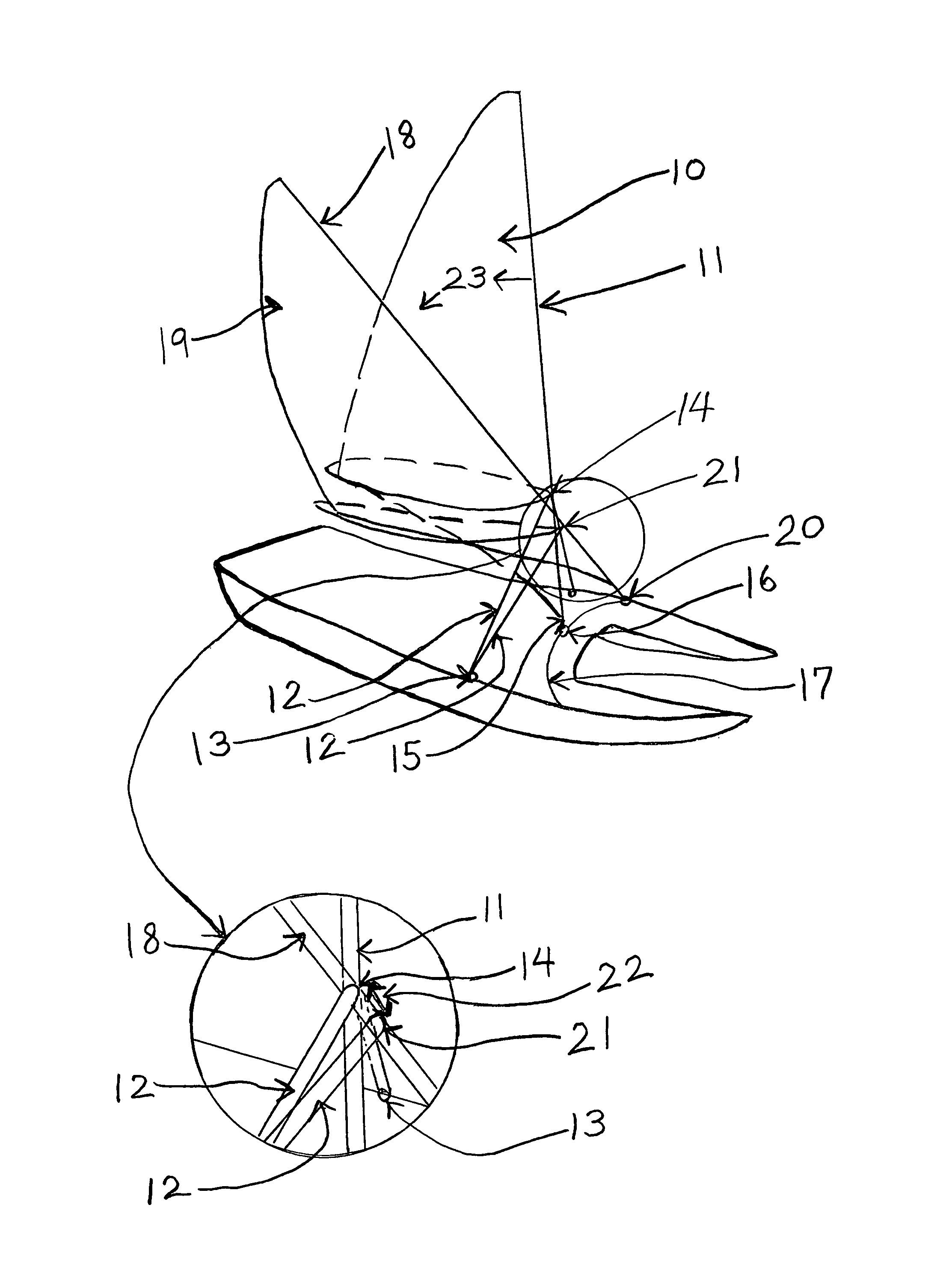Canted sail rig
a canted sail and rigging technology, applied in the field of canted sail rigs, can solve the problems of significant limits on the speed of the boat, reduced boat speed, lee helm, etc., and achieve the effect of reducing heeling and improving the lift creating the sail system
- Summary
- Abstract
- Description
- Claims
- Application Information
AI Technical Summary
Benefits of technology
Problems solved by technology
Method used
Image
Examples
Embodiment Construction
[0011]FIG. 1, shows in a side perspective view the canted sailboat sail rig with one sail. The one mainsail 10 is shown with the mast 11 in the non-tilted position. Mast support struts 12 are attached at one end to the hull(s) toward the deck railings 13 and at the other end to the lower section of the mast 14. The mast foot base 15 is attached to a moving car 16 on the mast base circular track 17. The tilting or canted mast 18 with sail 19 is created by the outward and toward the bow movement of the mast foot base 20, in the opposite direction on the mast base circular track 17. The point where the mast support struts 12 attach to the mast 21 rotates downward 22. The tilted sail 19 also rotates toward the stern 23.
[0012]Shown in FIG. 2 in a side perspective view the canted sailboat sail rig with mainsail and jib, or headsail. The mainsail 24 and jib 25 are shown in the non-tilted or non-canted position, with the mast support struts 12 attached near the hull(s) railings 13 and to th...
PUM
 Login to View More
Login to View More Abstract
Description
Claims
Application Information
 Login to View More
Login to View More - R&D
- Intellectual Property
- Life Sciences
- Materials
- Tech Scout
- Unparalleled Data Quality
- Higher Quality Content
- 60% Fewer Hallucinations
Browse by: Latest US Patents, China's latest patents, Technical Efficacy Thesaurus, Application Domain, Technology Topic, Popular Technical Reports.
© 2025 PatSnap. All rights reserved.Legal|Privacy policy|Modern Slavery Act Transparency Statement|Sitemap|About US| Contact US: help@patsnap.com



